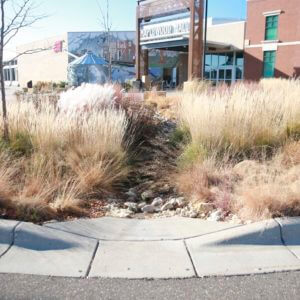News
Recent Immigrants Become Water Stewards
Wed, Mar 1, 2017Adult students learning English at Harmony Learning Center in Maplewood, Minn. are becoming water stewards as they learn idioms and conjugate verbs.

Learning English while becoming a water steward with the Ramsey-Washington Metro Watershed District.
These dozen students, who come from countries known more for their tropical plants and deserts, say the concept of watersheds is new. “Before, we didn’t think about how clean water is, where it’s coming from, who takes care of it,” says Veronica, one of the new water stewards from Mexico.
But a partnership between the school and the Ramsey-Washington Metro Watershed District has been expanding students’ interests and enlivening their lessons.
This fall, they prepared for a field trip to the Kohlman Lake/Creek watershed in North St. Paul and Maplewood by poring over a list of vocabulary words: “restoration, sediment, erosion, cistern, phosphorous”—scarcely the stuff of beginning English.
The students carefully intone “pervious” and “impervious” as their teacher Liddy Rich explains the difference—part of their preparation for “following a trail of water” through the chain of lakes that flows into Lake Phalen in St. Paul.
Armed with clipboards, watershed maps, and scavenger hunt vocabulary lists, the students from Myanmar, Laos, Bangladesh, Iraq, Mexico, Somalia, and Cameroon head out to learn “how to stop water where it drops,” becoming water stewards as they gain fluency with the language, says watershed education specialist Sage Passi.
Rain Gardens Provide Initial Lesson for New Water Stewards

In this experiential approach to language acquisition, the students started by planting a rain garden near their school this fall. They learned how these gardens absorb water that would otherwise gush into storm drains, and what sorts of plants are best suited to the role.
Tapping that prior knowledge, the field trip starts with a tour of neighborhood rain gardens, several on each block, in North St. Paul. As the bus slows to a stop along Mohawk Ave., Passi asks the students “What do we call the plants that grow here naturally?”
“Native!” comes the choral response.
Fadumo, who is from Somalia, notices that some of the grasses are similar to those in her home country. And two sisters-in-law from Bangladesh, Hosna and Sayema, remark that their brother is a botanist. They have sent him photos of these gardens, and he is anxious to try a similar planting in his home area. Already the ripple effects of this experience are international.
Maplewood Mall as Exemplar

The tour continues along the tidy streets of North St. Paul to a surprising watershed destination: the Maplewood Mall. There, students learn that this parking lot sports 55 rainwater gardens helping capture rainwater that would otherwise run off the 35-acre parking lot, thousands of square feet of permeable pavers infiltrating gallons of runoff, and 375 trees absorbing water in trenches.
Not only is the retrofitting of this parking lot capturing or filtering more than half of the parking lot’s runoff, but a cistern also captures some of the roof’s spillage—and supports a set of water chimes at the entrance to the mall.
Surveying the parking lot, Veronica says, “The community is doing a good job of taking care of water … and it’s very good that they can teach us how to stop the dirty water, too.”
Green Roofs Top Off Trip
The last stop for this roving busload is the Ramsey-Washington Metro Watershed District itself. The antithesis of a grey government building, the office is encircled by the largest rain gardens of the tour and sports a green roof—an opportunity for these new water stewards to get selfies.
Questions abound about the roof, and one student from Myanmar takes notes in two languages. “This helps me see new things, in a new way,” he says. “It cleans your mind.”
Teacher Rich underscores the idea, noting that the students also take more typical field trips to museums, but that this study of the watershed calls on them to play a role—and offers another purpose for their language acquisition.
With each of these excursions, students learn to navigate not only the metro area, but also conversations about the nuances of Minnesota’s most plentiful and threatened natural resource.

